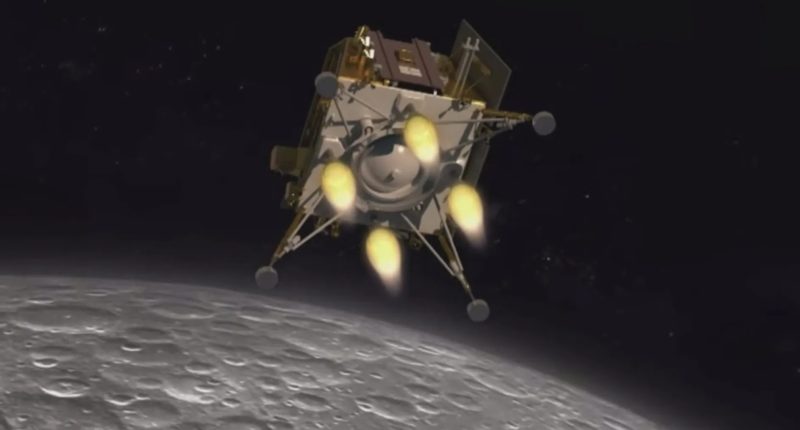JAPAN has launched its “moon sniper” into space, joining key space powers in the most ambitious year for lunar landings since Apollo 11.
It comes two weeks after India made history in becoming the first country to touch down near the south pole of the moon with its Chandrayaan-3 lander “Vikram”.
The historic moment marked a major step forward in the search for water-based ice, which will be crucial for future human habitation on the moon.
Any water found could also be broken down into hydrogen and oxygen and used to refuel spacecrafts for journeys to Mars and elsewhere.
Russia was desperate to be the first to investigate the area but failed miserably when its 800kg Luna-25 probe plunged from orbit into the moon’s surface and smashed into pieces.
It was Putin’s first lunar mission in 50 years; he had hoped the robot spacecraft would spend a year on the celestial body collecting samples of rock and dust.


Luna-25 is reported to have cost “tens of billions of rubles” – or tens of millions of pounds – and required the evacuation of a remote village amid fears debris would fall on it.
The space agency said of the failure: “Communication with the Luna-25 spacecraft was interrupted. The measures taken on August 19 and 20 to search for the device and get into contact with it did not produce any results.
“According to the results of a preliminary analysis, due to the deviation of the actual parameters of the impulse from the calculated ones, the device switched to an off-design orbit and ceased to exist as a result of a collision with the lunar surface.”
Japan is now hopeful it will become the world’s fifth country to land on the moon after this week launching an exploration spacecraft aboard a homegrown H-IIA rocket.
Most read in Tech
Japan Aerospace Exploration Agency said the rocket left southern Japan as planned and successfully released the low-cost “moon sniper”, or Smart Lander for Investigating Moon (SLIM).
If all goes according to plan, the $100 million (£80.18 million) mission will start the landing by February next year and touch down within 100 metres of its target site.
Japan Aerospace Exploration Agency said: “The big objective of SLIM is to prove the high-accuracy landing … to achieve ‘landing where we want’ on the lunar surface, rather than ‘landing where we can’.”
Japan hopes to use SLIM to test advanced optical and image processing technology and find clues about the origin of the moon.
It follows two earlier lunar landing attempts by Japan which failed in the past year; one disappearing and the other crashing as it tried to land on the moon’s surface.
US space agency Nasa is due to launch its next moon mission, Artemis II, with onboard astronauts in 2024.
In a future mission in 2025 or 2026, it intends to land the first woman and first person of colour on the moon, as well as explore its surface, establish “the first long-term presence”, and use any findings in its ultimate undertaking: sending the first astronauts to Mars.
Nasa will use the Space X Starship for the mission.
China is also joining the reinvigorated space race with plans to land astronauts on the moon by the end of the decade.
If successful, it will be only the second country to do so, behind the US.
State media recently revealed it will use the lunar orbit rendezvous process for the mission, which is similar to that adopted by the US in its Apollo program but will send the lander and the command spaceship on two separate rockets instead of one.
China Manned Space Agency deputy chief engineer Zhang Hailian said the crew will carry out scientific investigations and collect samples before returning to Earth, reports South China Morning Post.
An astronomer at the Harvard-Smithsonian Centre for Astrophysics in the US, Dr McDowell, told the BBC this apparent surge of interest in going to the moon is related to space powers wanting to set up habitable bases.


He explained: “The moon is being used as a stepping stone to places like Mars.
“It’s a great place to test out deep space technologies.”














